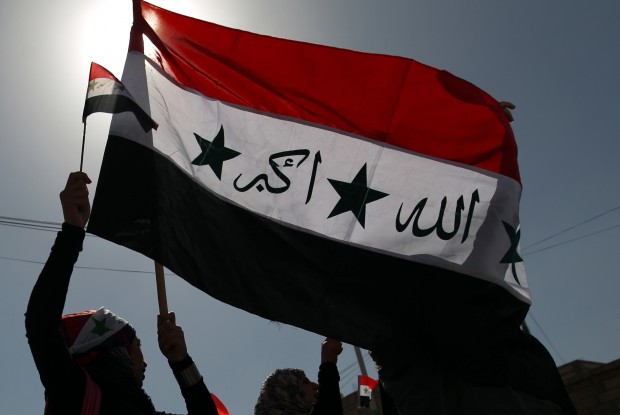Almost a decade ago a four letter word divided political opinion across the board. The word was “Iraq” whose regime had acted as a rogue state since the late 1960s.
The debate that caused the division achieved new intensity when a “coalition of the willing” led by the United States invaded Iraq to topple the despot Saddam Hussein.
Those who supported the war advanced a set of arguments. Saddam had invaded two of Iraq’s neighbors and tried to efface a member of the United Nations, Kuwait, off the map. He had violated 14 mandatory resolutions of the Security Council and was suspected of producing weapons of mass destruction, including a nuclear warheads.
There were other arguments, including the use of chemical weapons to mass murder civilians in the Kurdish town of Halabcheh and political repression of an intensity unprecedented even by Arab despotic standards.
Opponents of the war claimed that Saddam was a “progressive” leader falling victim to American imperialism seeking to quench its energy thirst by “stealing the oil of Iraq.” There was also the argument that imposing regime change could set a dangerous precedent and lead to “the law of the jungle.”
The arguments carried heavy emotional charges on both sides.
My American literary agent at the time was so angry about the invasion of Iraq that she decided to live in Paris and not return to the United States until after President George W. Bush had left office.
Leaving aside emotional reactions, the fact remained that Saddam had led Iraq into an historic double impasse.
Domestically, the Ba’athist regime had nothing positive to offer and, from 1990 onwards, relied almost exclusively on repression to maintain its grip. Its pan-Arab discourse had been exposed as a sham and Iraq’s disastrous performance in the eight-year war against Iran debunked its claims of efficiency. Externally, the Ba’athist regime could not develop a new foreign policy needed to restore Iraq’s position within the international system. A strategy based on bluff and cat-and-mouse games with UN inspectors did not amount to a coherent foreign policy.
Rightly or wrongly, like other nations in similar situations, Iraq needed change. The trouble was that there was no mechanism for internal change; Saddam’s personal rule had prevented the creation of one.
There were desperate efforts by Jacques Chirac, then President of France, to organize some “change within the regime” that would prevent the US-led invasion. At the time, in a private briefing, Chirac’s point-man for the scheme told me how Paris wanted Saddam to “step aside”, allowing his son Qusay to take over as prime minister offering a “new beginning”.
I don’t know whether Chirac’s scheme might have saved the French leader’s old friend. But it soon became clear that there could be no meaningful change in Iraq as long as Saddam remained in the game. Qusay told his French contact to abort the scheme because Saddam was beginning to suspect his own son of plotting against him.
The Saddamite system was just one version of the “security-military” model developed in many Arab countries between the 1950s and 1980s. Saddam’s demise meant the beginning of the end for that model in all its versions.
It showed that even the most bloodthirsty tyrant could someday meet his comeuppance. Change in Iraq gave fresh urgency to the narrative of change across the region.
Fixated on events, notably General Tommy Franks’ tanks racing towards Baghdad and facing no resistance, many observers missed an important historic undercurrent: Almost no one wanted to fight for Saddam.
By largely standing aside, Iraqis became co-liberators of their country. They had been dealt a terrible choice between fighting to preserve a tyrant who had oppressed them for decades and foreign armies marching on their capital.
Change in Iraq triggered a decade of change in the region. The Lebanese launched their Cedar Revolution that led to the expulsion of the Syrian army of occupation. The “Arab Spring” swept away most, though not all, “security-military” regimes from Tunisia to Yemen. Frozen out of history for decades, several Arab states were plunged into what one could call creative chaos.
Over the past 10 years, Iraqis have experienced immense suffering caused by sectarianism, jihadism, corruption, and incompetence.
Despite billions in oil income and substantial injection of funds by the US and allies, many parts of Iraq, including Baghdad, do not yet have reliable water and electricity supplies.
Worse still, the machinery of oppression has not been completely dismantled and could still be used, at least in part, by mini-Saddams in a new political context. Trials of dubious legality, the imprisoning of real or imagined critics and, worse still, numerous executions paint a grim picture.
Nevertheless, Iraq today is a better place than it was in the final decades of Saddam’s rule. More importantly, its potential for development has been released, ready for use by a new generation of leaders emerging from a turbulent decade.
Iraqis did not achieve what they had hoped they would. They achieved what they could.
The invasion was not about the US setting up military bases in Iraq or stealing Iraq’s oil or using Iraqi territory for an invasion of Iran. Nor was the invasion about imposing democracy by force. It was about two things: stopping a time bomb that was ticking in the heart of the region and, hopefully, giving Iraqis a chance to decide their own future.
What Iraqis do with it is their business.
